It is often useful to search for issues in order to make individual selections from the result set, and relate individual issues to the parent record. For example, you might have a business area that contains many bugs, and you want to atrbitrarily relate some of these bugs to the parent issue as they are similar to the parent issue by scanning up and down the results and indiivdually choosing the results to relate.
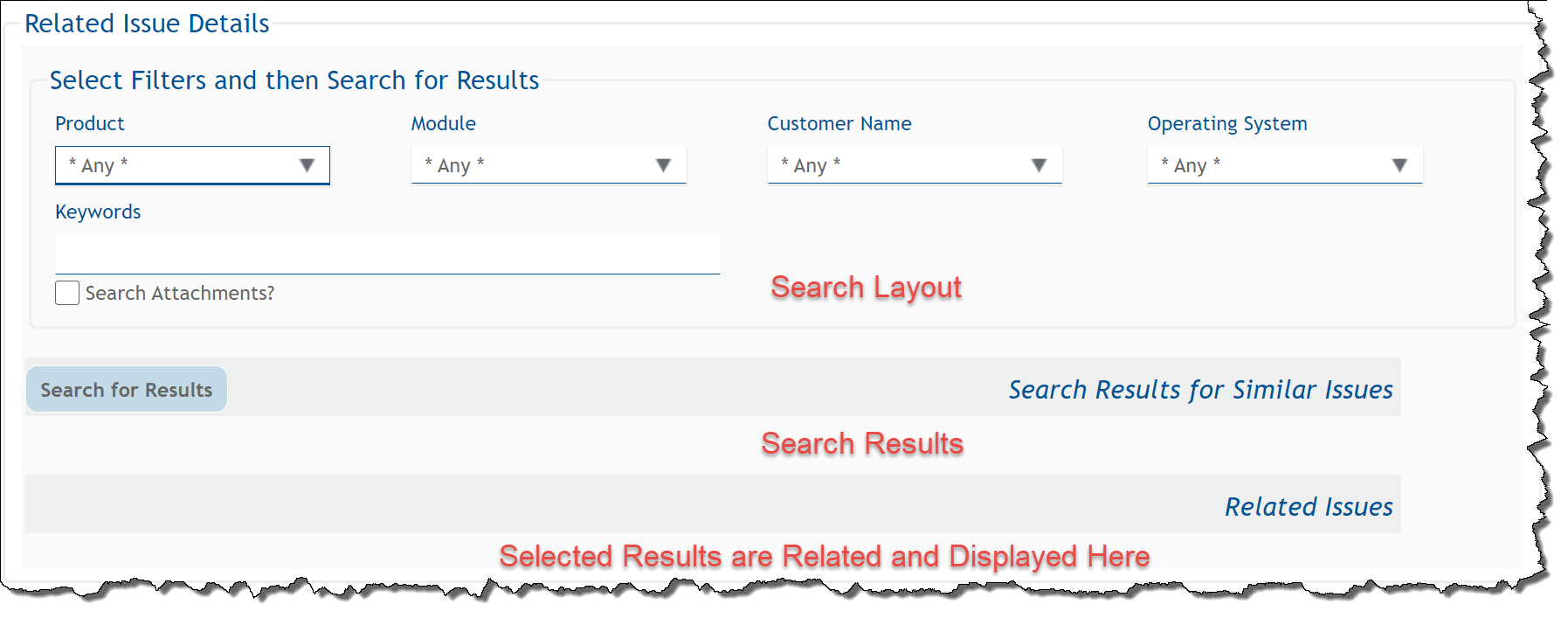
Initial presentation of screen
In the above screen, you will observe a search layout; this is used to provide a filtered set of search results within a related issue display. Note the Search for Results button in the header of the related issue display with the title Search Results for Similar Issues.
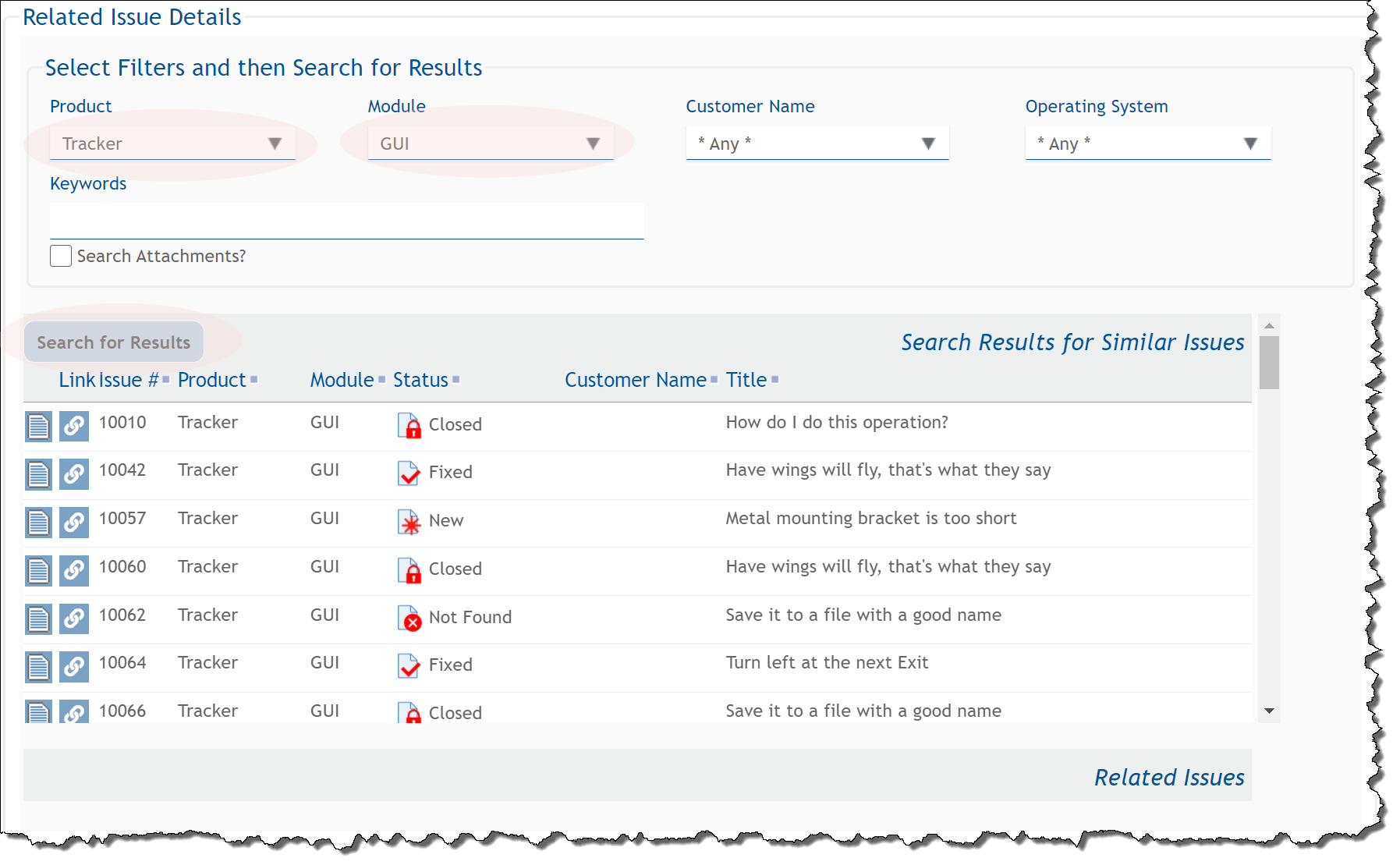
Entering the search criteria and seeing the results
Once you have selected filters, use the Search for Results button to display the results in the related issue display. With your mouse, you can click on the Link button against any one or more than one result to relate these records to the parent issue. Note that the title of the Search for Results and the icon used for the Link button are customizable.
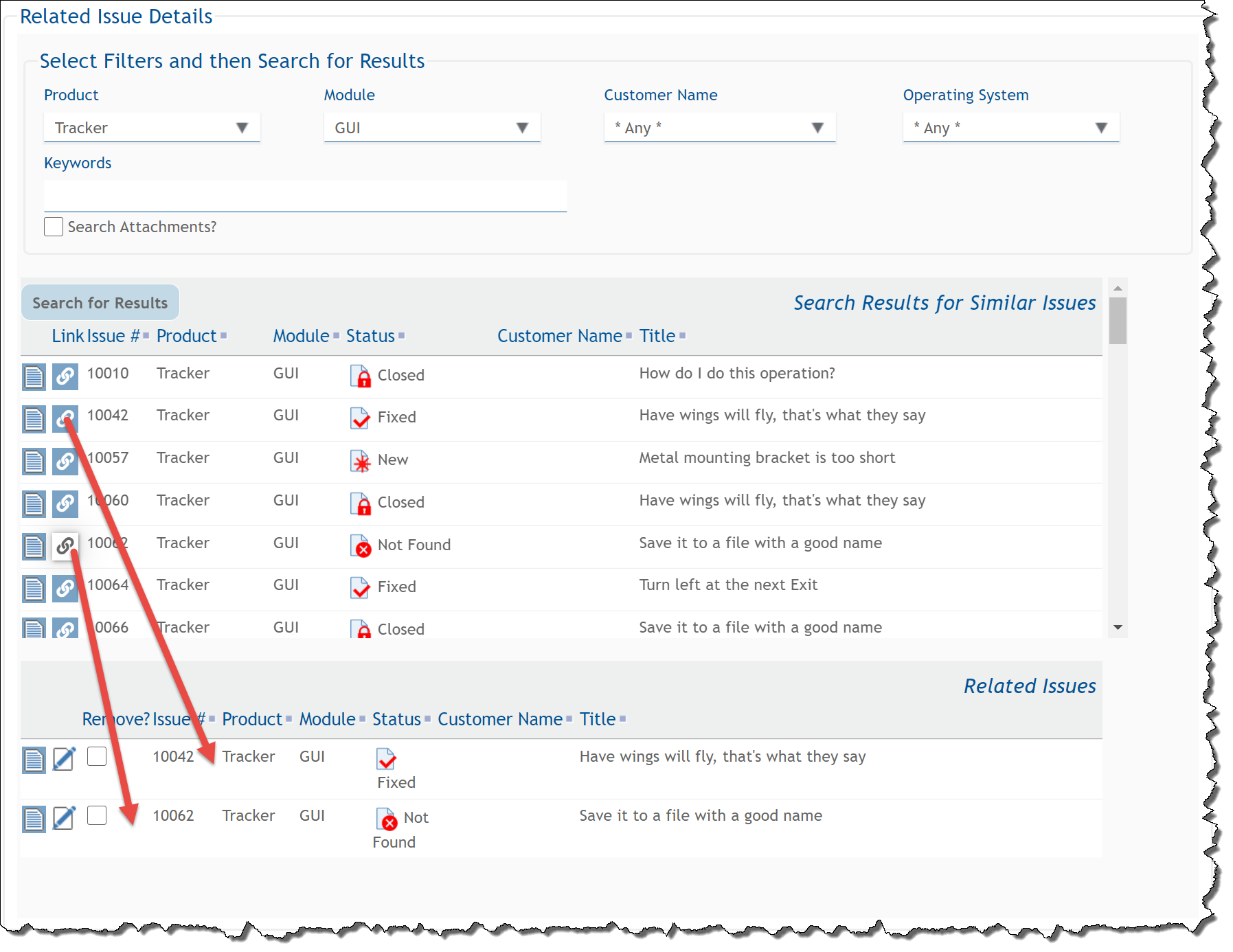
The selected results now related to the parent issue
Use the Link to move any selected record into the final result set where they will be stored with the parent issue. You may repeat the connection process with the Link button to add additional child records to the parent record. The basic configuration involves setting up 3 embedded layouts, one for the search, one for the search results and one for the selected records. A text or text area field is used to connect the selected valus from the search results to the selected records:
This is created within the Administration utility, Relationship Group Maintenance. This should be of the type One-to-Many. In our example, we named this SIMILAR_ISSUES and gave it a title of Similar Issues.
A prerequisite to making the search layout operate is to configure the Quickfind feature. Once this has been done, create a new layout type. This may have any name and any title, but it must have a usage type of Search. This is used to contain the search filters that will be displayed to the user. For our example, we will use the name SIMILAR_ISSUE_SEARCH. Next, add the new layout to the area and project where it is needed, creating a new layout. Onto this layout, you will place the fields to be used as filters. No special layout cell attributes are required, but you may use whatever attributes help you provide an aesthetically pleasing display. Save this layout.

The search layout
This should be created within the Data Dictionary as a field with a display type of Text. The field will not be visible to users, and is used internally to pass the ID of the selected issue between the layouts on the screen. In this example, we name the field TEST_CASE_RESULTS_LINK_FIELD.
This is created within the Data Dictionary under the Labels / Buttons tab. In our example, we have named this RELATE_MY_ISSUE.
window.doRGSubmit('$$LAYOUT_ID$$', 'SIMILAR_ISSUES_LINK_FIELD', '$$ID$$');
If you are using a different field name for SIMILAR_ISSUES_LINK_FIELD, then substitute this name
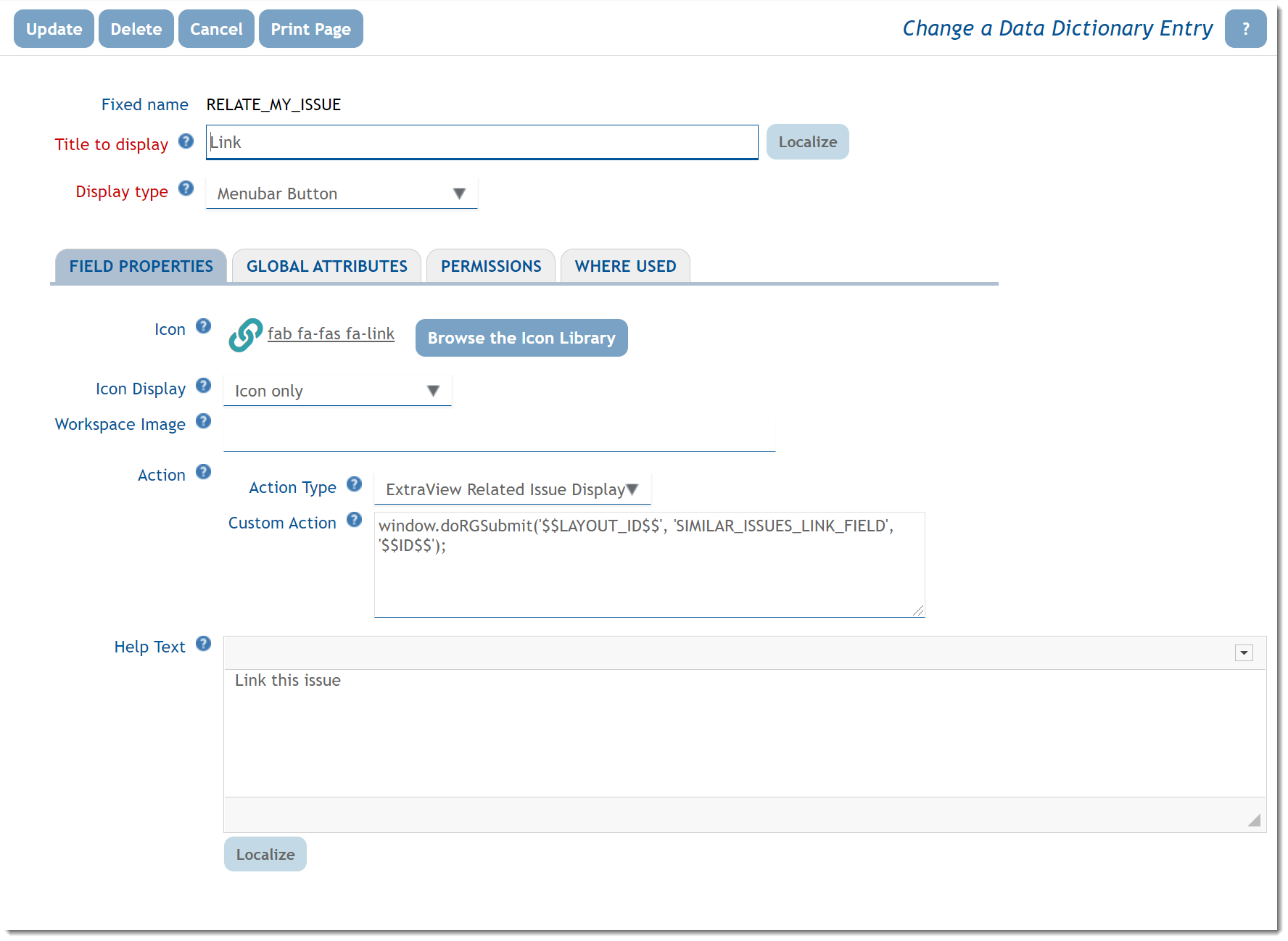
This is used to contain the results of the search. Note that the fields displayed do not need to match the fields within the search layout, although it is usual to see several fields in common. Create a new layout type to contain the related issue display. By convention, begin the name of the new layout type with RELATED_ and followed by remaining characters that provide an unique name for the layout. The usage type of this layout must be Report. For our example, we name this layout type RELATED_SIMILAR_SEARCH_RESULTS. Now, add the new layout to the area and project where it is needed, creating a new embedded layout within the Business Area and Project for the add or edit screen. Place all the fields on the layout, including the menubar button, named RELATE_MY_ISSUE in this example. This button is used as the link button to select the record you want to place into the add or edit screen. It is recommended that you only place the VIEW_BUTTON as another button on this layout. You should not place other buttons such as EDIT_BUTTON or QUICKEDIT_BUTTON on this layout as this layout is only displaying search results.

The related issue display layout with the results
This layout is typically similar to the Related Issue Display that contains the search results, in terms of the fields you display, but you will likely want to see different buttons. In this example, the layout is named RELATED_SIMILAR_ISSUES. Most typical you include a VIEW_BUTTON and an EDIT_BUTTON. A QUICKEDIT_BUTTON is often useful.

The related issue display layout that displays the selected records
This section describes how you pull together all the above configuration to produce the complete configuration.

Cell attributes on the child record layout
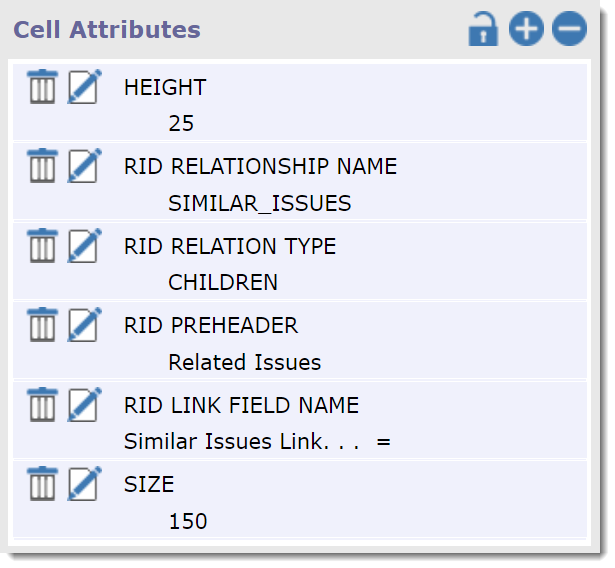
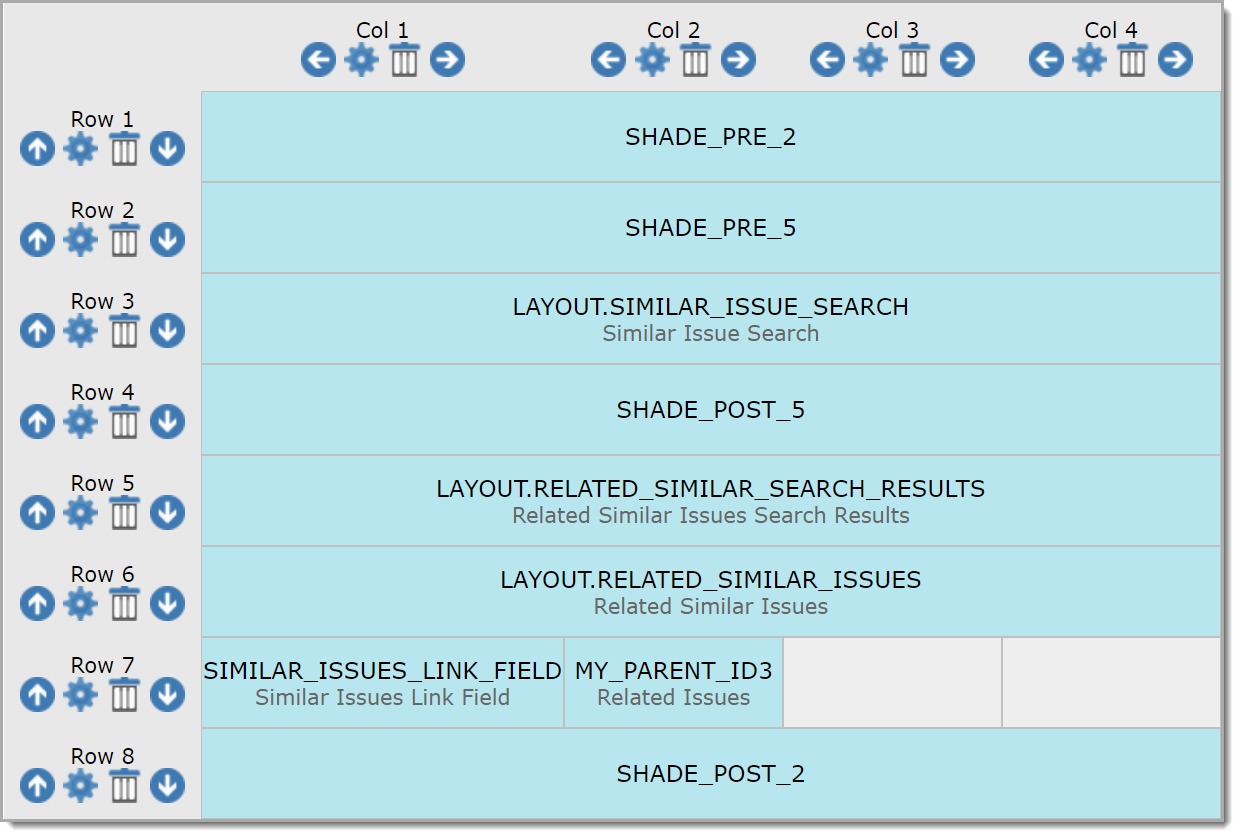
Note the placement of other elements such as the shaded regions.